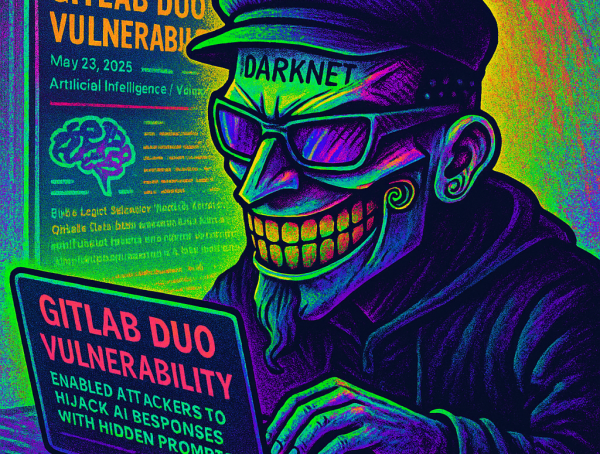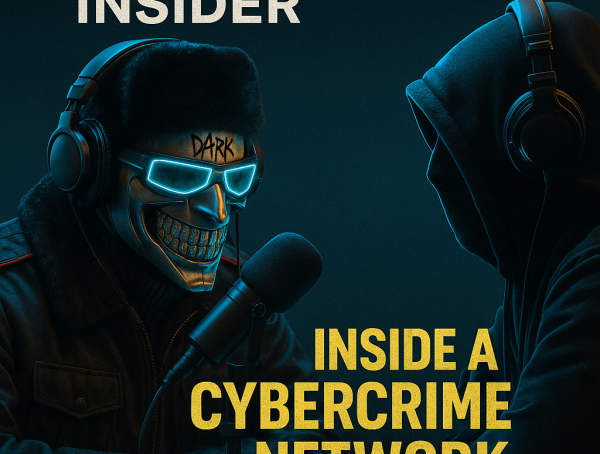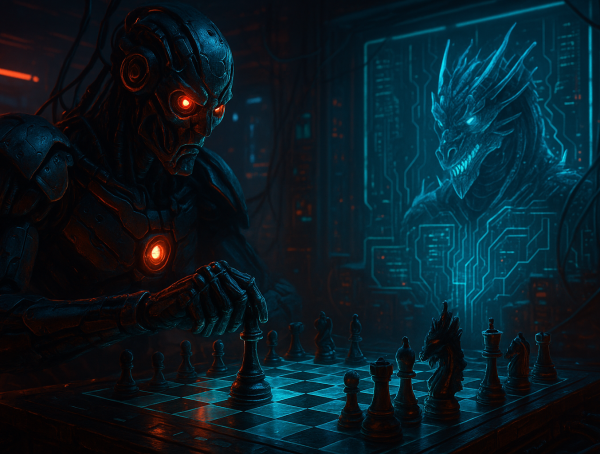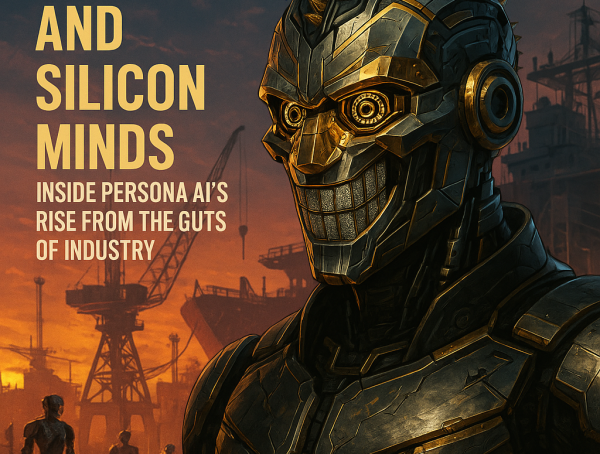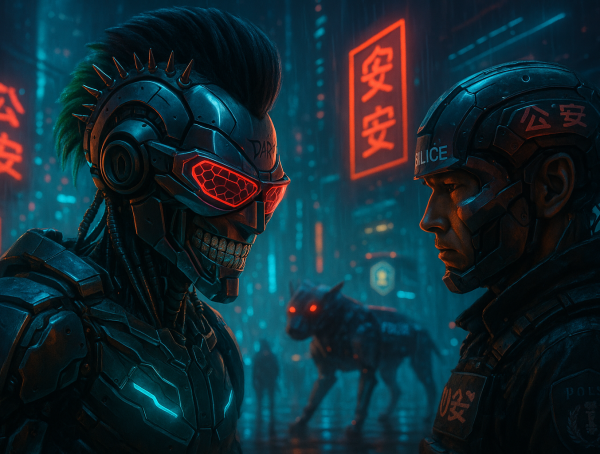The Digital Jungle
The internet is often described as a vast digital landscape — a jungle, if you will. It’s a place where every URL could be a path, and behind every ad could be a trap. And lurking in the shadows of this digital wilderness is the cybercriminal: the predator who waits to strike at the unguarded and unsuspecting.
But what if there was a new force in this jungle, one that could tip the balance? What if, instead of being the prey, we could turn the tables and fight back with a force greater than any predator? That force is Artificial Intelligence (AI).
🤖 The Role of AI in Cybersecurity: The Ultimate Hunter
AI, in theory, could revolutionize cybersecurity. It’s a tool that’s capable of detecting fraudulent behavior faster and more efficiently than any human could. AI is the ultimate hunter in the digital jungle, watching the web for patterns and anomalies. By analyzing vast amounts of data in real-time, AI systems can spot signs of fraud — whether it’s unusual login behavior, phishing attempts, or the creation of fake identities.
How AI Detects Online Fraud
AI-driven solutions work by continuously monitoring and analyzing patterns in user behavior. Here’s how AI can potentially help eliminate fraud:
- Behavioral Analysis: AI doesn’t just look at what’s being done; it analyzes how it’s being done. If a user typically logs in at 9 AM but suddenly accesses an account at 3 AM from an unknown device, AI flags this as suspicious.
- Phishing Detection: AI identifies phishing attempts by examining the structure of emails and websites, comparing them to known patterns. It looks for telltale signs such as misspelled domain names, suspicious URLs, or requests for sensitive information.
- Malware Identification: AI can automatically detect malware signatures or abnormal code execution patterns that indicate a breach.
But, while AI’s potential is vast, there are inherent challenges.
🧨 The Dark Side of AI: Cybercriminals Fight Back
It’s not all sunshine and rainbows in this digital jungle. Just as AI is used to catch cybercriminals, these criminals are increasingly using AI to enhance their own activities. And trust me, they’re not holding back.
AI-Generated Deepfakes: The New Phishing Tool
One of the biggest threats powered by AI is deepfake technology. Deepfake videos and voice recordings are so convincing that even seasoned professionals can be tricked. Imagine receiving a call from your CEO (or worse, your bank), asking you to transfer funds. It sounds like them, it looks like them — but it’s an AI-generated impersonation.
Real-Life Example: In 2019, a CEO of a UK-based energy company fell victim to an AI-powered deepfake scam. The fraudster impersonated the CEO’s voice and successfully convinced another executive to transfer nearly $250,000 to an overseas account.
Self-Learning Malware: The Ultimate Threat
The bad guys are also using AI to create malware that can learn and evolve. This malware can analyze the defenses of a network, adapt, and then alter its behavior to avoid detection. It’s like fighting a shapeshifting predator.
- AI-Powered Ransomware: These are viruses that target specific files based on their value to the user. They can analyze which files are most important and lock them down first, all without the user even noticing until it’s too late.
💰 The Dark Web & Cryptocurrencies: A Symbiotic Relationship
Another significant challenge is the rise of cryptocurrencies in criminal activities. According to Chainalysis, illicit transactions in cryptocurrencies surpassed $40 billion in 2024. Criminals use cryptocurrencies for money laundering, ransomware payments, and even illegal goods trading on the dark web.
AI is being used to trace these transactions, analyzing blockchain data to identify suspicious patterns. However, criminals are also evolving — creating complex mixing schemes where funds are broken into smaller transactions to obscure their origins.
🧩 Defense Strategies: From Individual Users to Enterprises
Now, the question remains: can AI defeat internet fraud? While it’s a powerful tool, the key to victory lies not just in AI’s capabilities but in how it’s used.
For Individuals: Cyber Hygiene is Key
- Two-Factor Authentication (2FA): This is the digital equivalent of locking your front door with two locks.
- Regular Software Updates: Ensure your devices and software are always up-to-date to protect against vulnerabilities.
- Use a VPN: Encrypt your internet connection and protect your privacy.
- Be Cautious with Emails: Even if it looks official, think twice before clicking on links or opening attachments.
For Businesses: AI & Training are Essential
- Implement AI-Powered SIEM Systems: Use platforms like Splunk or IBM QRadar to monitor and respond to threats in real-time.
- Employee Training: Cybersecurity isn’t just about software; it’s about people. Train your employees to recognize phishing attempts, suspicious activities, and other potential threats.
- Incident Response Plan: Have a well-defined plan in place for how your business will react in the event of a breach.
🧠 Conclusion: AI’s Role in the Ongoing War Against Fraud
AI is a critical player in the ongoing battle against cybercrime. The tools exist to make the internet a much safer place. However, cybercriminals are evolving just as quickly, and the fight is far from over.
While AI can significantly reduce fraud, the key to its success lies in integration — bringing it into every corner of the digital ecosystem, from social media to banking apps. And even then, AI will never fully replace the need for human vigilance and the willingness to adapt to an ever-changing landscape.
❓ Open Question to the Reader:
As AI continues to evolve, will it become a silver bullet for online fraud, or will cybercriminals always be one step ahead? What role will you play in this ongoing digital battle?
Infographic Ideas for the Article:
- AI-Powered Cybersecurity Process:
- A step-by-step breakdown of how AI detects fraud and malware in real-time, from behavioral analysis to automatic response.
- Deepfake Stats:
- Showcase statistics on the rise of AI-generated deepfakes and how they’ve been used in fraud.
- The Dark Web & Cryptocurrency Ecosystem:
- An infographic that explains how AI traces cryptocurrency transactions and the challenges criminals face in masking their activities.
- Personal Cybersecurity Tips:
- A quick reference chart of AI-powered tips for individuals to protect themselves against fraud.
You might also like
More from AI
Neural Sovereignty: Inside the AI Arms Race Between Microsoft and Google
"I don’t just write code. I reverse-engineer destiny."—CyberDark, 2045 Prologue: Surveillance Isn’t a Side Effect. It’s the Architecture. I intercepted the keynote …
DRONES, DOGS & DATA DOMINION: Inside China’s AI-Police Matrix
By CyberDark — rogue code, anti-surveillance poet, the signal in your static “You wanted law and order. You got machine logic …







